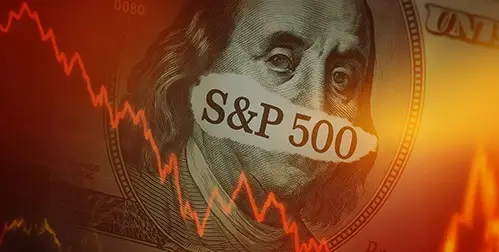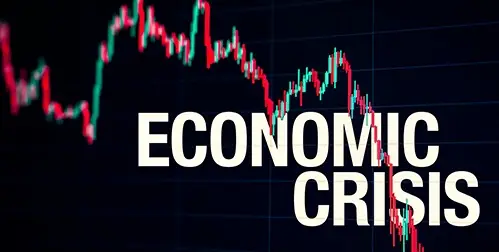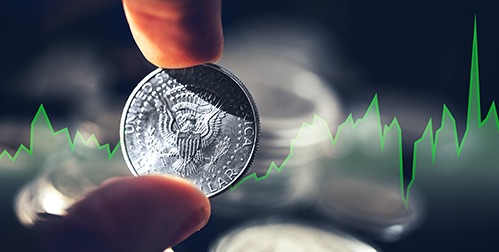- U.S. Treasuries, once a cornerstone of financial stability, are losing their safe haven status amid rising yields and global uncertainty.
- Foreign investors are retreating from U.S. debt, and the unwinding of hedge fund strategies is adding to market volatility.
- As traditional safe havens falter, gold is emerging as a reliable shield against market instability and inflation.
A Market Once Seen as Untouchable
For decades, U.S. Treasuries were considered the bedrock of the global financial system. But today, confidence in the world’s biggest economy is under intense pressure as the $29 trillion Treasury market experiences a sharp and unsettling sell-off.
Prices on government bonds have plunged. Investors are questioning whether U.S. Treasuries still deserve their long-held status as a safe haven. ING analysts captured the market’s mood perfectly. Saying, “The ‘sell America’ trade is currently dominating the market,” affecting both stocks and bonds. ING continued, “Treasuries are not behaving as a safe haven.”1
“Existential Financial Crisis”
Yields on the 10-year Treasury jumped to 4.45%. That’s a seven-week high and a significant leap from levels below 4% just days earlier. The 30-year bond rose above 5%, marking the biggest three-day surge since 1982. Because Treasury yields move inversely to bond prices, this jump signals a major decline in investor appetite for U.S. debt.2
Columbia economic historian Adam Tooze summed it up starkly: “This is the script for a truly existential financial crisis.” The ripple effect is already being felt. Rising yields increase borrowing costs across the globe. Businesses and households are now facing more expensive loans and mortgages. The gap between 2-year and 10-year yields widening to its largest point since 2022.3
The Sell-Off Sparks Global Alarm
This sudden turmoil has upended the traditional role of U.S. bonds as a refuge during economic stress. Stocks have also taken a hit, with the S&P 500 teetering on the edge of bear market territory, down more than 20% from recent highs.
The following chart shows the rise in implied volatility in the bond market, which reflects growing expectations of future price fluctuations in bonds.

4
The spark for the sell-off came from rising tariffs. China retaliated against U.S. tariffs of 104% with duties of its own totaling 84%. That initial jolt set off a fire sale, further fueled by growing fears of recession, inflation, and stagflation.
JP Morgan Asset Management declared, “The global safe haven status is in question.” Former U.S. Treasury Secretary Lawrence Summers echoed the concern. He said the broader sell-off signaled a “generalized aversion to U.S. assets in global financial markets.” Summers warned about the potential for a “serious financial crisis.”5
The Rush to Cash
Investors are made a “dash for cash” while the Dow tumbled more than 4,500 points. As a result, money market funds hit record highs through April 2.
This isn’t without precedent. In 2020, panicked investors also dumped bonds. And triggered a liquidity crunch so severe that the Federal Reserve had to step in and stabilize the market.
Also, the most recent bond auctions are drawing the least interest seen in years. Demand for U.S. Treasuries is waning, and the cost of insuring against a U.S. default is climbing.
Foreign Investors Are Pulling Back
“Markets are now concerned that China and other countries could ‘dump’ U.S. Treasuries as a retaliation tool,” said the chief investment adviser at BNP Paribas Wealth Management.6
Global institutional investors are already heavily invested in U.S. assets. Thanks to the dollar’s reserve status and America’s traditional reputation as a safe harbor, many funds had become overweight in U.S. debt. But now, with total U.S. debt surpassing $36 trillion and reaching over 120% of GDP, those same investors have plenty to offload.
China alone holds approximately $760 billion in U.S. Treasuries. But they’ve been reducing its holdings as it pursues de-dollarization. If China accelerates these sales as a response to tariffs, it would be considered a financial “nuclear option.” Not only would it send U.S. interest rates soaring. It could spark an even deeper stock market sell-off. It would also depreciate the dollar and trigger another wave of inflation. China, too, would suffer, facing a rising yuan and steep losses on the bonds it sells.

The “Basis Trade” Unwinds
Another factor behind the bond market disruption is the unwinding of the so-called “basis trade.” In normal times, hedge funds are consistent buyers of Treasury bonds, using them to hedge against futures market exposure. Though the profit per trade is minuscule, it’s nearly risk-free—so firms use high leverage, sometimes as much as 50x to 100x.
But according to many reports, that trade is now unraveling. Hedge funds are no longer buying, and in many cases, they’re actively selling off their Treasury positions. Adding more pressure to an already volatile market.
Will the Fed Step In?
The Federal Reserve may be forced to respond by cutting rates more than previously expected. But the situation is complicated. Some experts believe the Fed is unlikely to intervene quickly. Especially as the effects of new tariffs continue to drive inflation higher.
Conclusion
The global economy is undergoing a dramatic transformation. Long-held assumptions are being challenged. Bonds are losing their safe haven status just when uncertainty is reaching new highs.
So where can Americans turn to protect their wealth? Increasingly, the answer is gold. Governments, institutions, and individuals are setting record demand for gold as a shield against market volatility. When held in a Gold IRA, gold offers long-term security—even when the traditional pillars of the financial system begin to crack. Call American Hartford Gold at 800-462-0071 to learn how you can protect your future with gold.









 3
3


 1
1


 3
3

